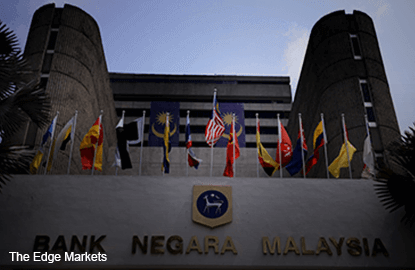
BANK Negara Malaysia is commencing a review of its Financial Sector Blueprint (2011-2020) as this year is the midway point of the 10-year plan.
Sources say the central bank has put together several multi-party working groups to discuss the various aspects of the existing blueprint. It is learnt that these working groups are tasked with reviewing the implemented or ongoing implementation of initiatives with a view of making recommendations on what other policy measures are required over the next five years.
Bank Negara declined to comment on the matter at this preliminary stage.
Recall that the Financial Sector Blueprint was launched in December 2011 against a backdrop of uneven global growth in the aftermath of the 2008/09 global financial crisis.
At the time, the financial crisis impacted growth in the developed economies of the US and Europe, prompting renewed interest in the emerging economies of Asia, Latin America, Africa and the Middle East.
Domestically, this was also when Malaysia articulated ambitions to transform itself into a high-income, developed nation driven by private sector investments and innovation-intensive economic activity.
The blueprint outlined the major goals that former central bank governor Tan Sri Zeti Akhtar Aziz had envisioned for Malaysia’s financial services sector. The 183-page document contains 69 recommendations and over 200 initiatives designed to bring about strategic outcomes.
Industry sources say a mid-term review is “timely” as the blueprint was drafted more than five years ago.
“In a way, Zeti has checked off a lot of things. The new governor (Datuk Muhammad Ibrahim) may want to look at what has been done, what more needs to be done and what else is there to include,” says a person familiar with the matter.
Industry players, however, do not expect a major overhaul of the blueprint. A lot of the recommendations in place remain relevant today.
“The thrust of it should largely remain the same, such as the ongoing emphasis on Islamic finance, regulatory focus and financial system stability. We expect the review to be more of an update to address some of the more recent developments,” says a banking source.
The Financial Sector Blueprint built on its predecessor, the Financial Sector Masterplan, which intended to transform the Malaysian financial sector over a 10-year period (from 2001 to 2010) by developing domestic financial infrastructure and building the institutional capacity of domestic intermediaries.
Following that, the blueprint’s goal is to build a financial sector in 2020 that can support a “high value-added, high-income economy and generate a growth that is founded on productivity gains and innovation, that is inclusive, balanced and sustainable”.
Dr Yeah Kim Leng, Sunway University Business School professor of economics, says the mid-term review could broaden efforts on a number of key initiatives that had been undertaken by the central bank.
These include the push for greater financial inclusion, particularly access to financing options for households in the lower to middle-income group, and the march towards cashless payment systems.
“Cashless is one of the key pillars of modernising financial services and improving efficiency,” says Yeah.
Looking back at the last 10 years, he points out that one of the key achievements of previous policy directions for the financial services sector was the push for industry consolidation and rationalisation.
In the 1980s, Malaysia’s financial services industry had 77 domestic banking institutions and 55 domestic insurance companies. But as at 2011, at the time of the Financial Sector Blueprint, there were only 34 domestic banking institutions and 37 domestic insurance companies.
“This strengthened the resilience of our domestic firms. Our financial services sector has, to a large extent, been able to withstand the external shocks,” says Yeah, who sits on the central bank’s Monetary Policy Committee.
Yet, there is a fair bit more to be done for the financial sector.
Yeah notes that the mid-term review could also look into the existing vulnerabilities in the financial system, such as high household indebtedness, and if there is a need for further consolidation to remove some impediments to greater efficiencies.
According to Yeah, the central bank is also expected to continue to examine cross-border linkages and how regulators can ensure a more coordinated policy effort to support trade and fund flows.
Back in 2011, Bank Negara projected that the Malaysian financial sector would play an increasing role in serving domestic, regional and international needs.
On a broader scale, this involved evolving Malaysia into an international Islamic financial hub while building stronger linkages to facilitate intra-regional trade and investment.
“The cross-border element, especially the Asean banking framework, would need to move to the front burner … And also the ongoing need to keep tabs on illicit fund flow,” says Yeah.
Save by subscribing to us for your print and/or digital copy.
P/S: The Edge is also available on Apple's AppStore and Androids' Google Play.